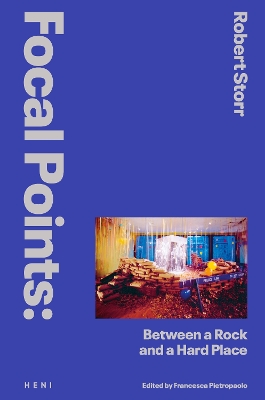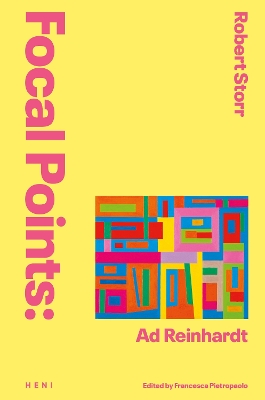Focal Points
2 total works
Focal Points is a new book series of essays, articles and reviews, by acclaimed curator and critic Robert Storr. Expertly edited by art historian and curator Francesca Pietropaolo, and richly illustrated, it lends Storr’s illuminating insights into some of the critical themes across recent decades that are of timely urgency. Brilliantly scholarly, accessible and engaging, Focal Points offers fresh interpretations of the varied territory of modern and contemporary art.
This volume grapples with one of the most critical topics at the heart of culture in the United States: racial division. In the essay, originally produced in 1994 when Storr lived in the diverse neighborhood of Flatbush, Brooklyn and worked as a curator in the then predominantly white, male world of New York’s Museum of Modern Art, the author vividly describes the role of the modern art museum and multiculturalism, and analyses issues of identity and representation explored in the works of a range of artists including David Hammons, Byron Kim, Glenn Ligon and Adrian Piper, among others.
How can we interpret the work of contemporary artists? Focal Points is a new book series of essays, articles and reviews by acclaimed curator and critic Robert Storr. Expertly edited by art historian and curator Francesca Pietropaolo, and richly illustrated, it lends Storr’s illuminating insights into an artist’s practice and way of thinking across recent decades. Brilliantly scholarly, accessible and engaging, Focal Points offers fresh interpretations of the varied territory of modern and contemporary art.
This volume considers the work of American abstract painter Ad Reinhardt (1913–1967). Active in New York for over three decades, Reinhardt was part of the group of artists who became known as Abstract Expressionists, and he made work that would prove influential to the younger generation of Minimal and Conceptual artists. He believed in a philosophy of what he called ‘art-as-art’ and used his writing and satirical cartoons to advocate for abstract art. As he famously wrote in 1962: ‘Art is art-as-art and everything else is everything else.’ In this volume, Storr discusses Reinhardt’s painting, his comics, and his slide lecture series or ‘non-happenings,’ as the artist called them.

